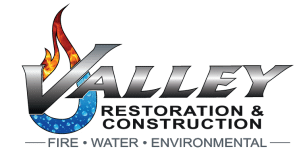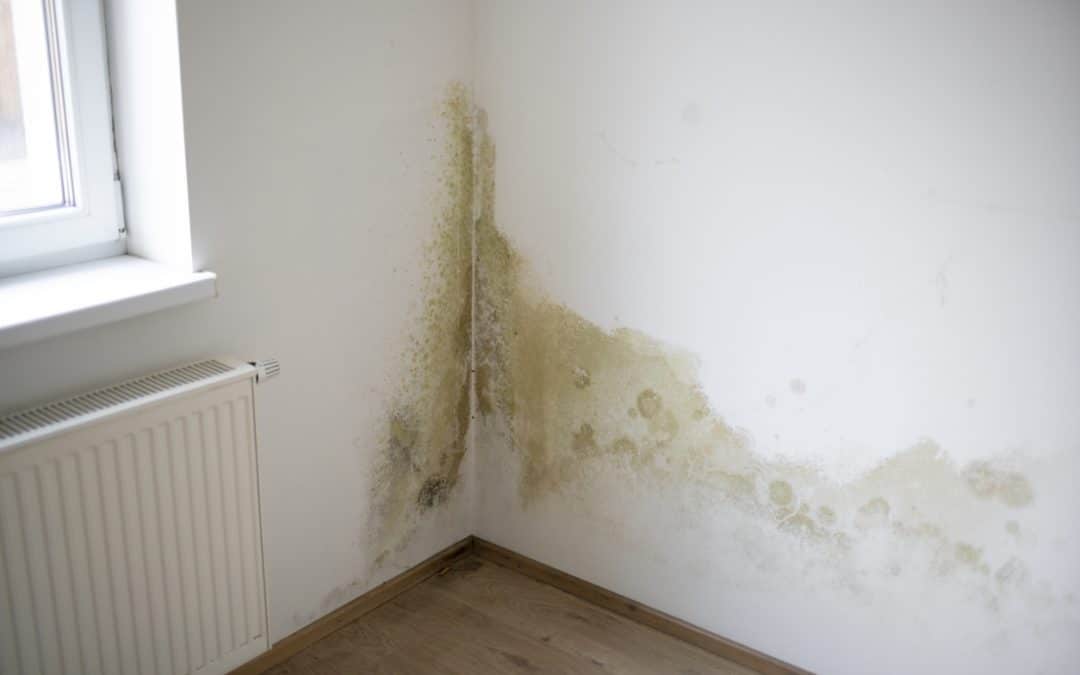Water damage can cause significant harm to a property if left unaddressed. Several factors, including natural disasters, plumbing issues, or appliance malfunctions, can cause it. Signs of water damage may not be immediately apparent, and ignoring them can lead to severe structural damage, mold growth, and health issues. Therefore, it is crucial to identify and address water damage signs as early as possible.
Common signs of water damage include the presence of mold or mildew, musty odors, discoloration or stains on walls, ceilings, and floors, dampness or standing water, and peeling or bubbling paint. These signs can indicate significant water damage, and it is essential to take action to prevent further damage to your property. Promptly addressing water damage can save you substantial costs and time in the long run, as it can prevent structural damage, mold growth, and potential health hazards.
Signs of Water Damage to Ceilings
Ceilings commonly experience water damage because they are the first point of contact for water leaking from roofs or plumbing systems above them. Flooding or heavy rain seeps through roof shingles or gaps in the roof also causes damage to the ceiling. Additionally, water damage can occur due to condensation, which can cause moisture to build up on the ceiling and result in mold growth or discoloration.
1. Peeling, flaking, or bubbling paint
Due to water damage, peeling, flaking, or bubbling paint on a ceiling can appear as irregular, raised areas that can be soft to the touch. These areas may also have visible discoloration, and the paint may appear wet or discolored. Sometimes, the paint may peel away from the ceiling, revealing the underlying surface. The severity of the peeling, flaking, or bubbling depends on the extent of the water damage and how long it has been present. It is essential to promptly address this type of water damage to prevent further ceiling deterioration and potential health hazards due to mold growth.
2. Small hairline cracks
Small hairline cracks on a ceiling due to water damage can be difficult to spot, but they may appear as thin, straight lines on the surface of the ceiling. These cracks may be barely visible or more noticeable if they have been present for some time. Over time, hairline cracks may widen or become more numerous, and discoloration or staining may become visible around the cracks. Small hairline cracks on a ceiling can be a sign of water damage, and it is crucial to address the issue to avoid severe damage.
3. Water stains or rings
Water stains or rings on a ceiling are discolorations caused by water that has seeped through the ceiling and left behind a visible mark. These stains can be various shades of light brown or yellow and are often circular or irregularly shaped. The appearance of the stain may depend on the extent and duration of the water damage, as well as the type of ceiling material. Water stains can also be accompanied by other signs of water damage, such as peeling or bubbling paint, mold growth, or musty odors.
4. Mold growth
Mold growth on a ceiling is a clear sign of water damage and can appear as black, green, or gray spots or patches on the surface of the ceiling. Mold growth occurs in areas where moisture is present and can spread quickly if left unaddressed. Mold can cause health problems, especially for individuals with allergies or respiratory issues. In addition to the visual appearance of mold, there might be a musty odor.
5. Saggy or bowed ceilings
Saggy or bowed ceilings can be a sign of water damage and are typically caused by prolonged exposure to water or moisture. When water seeps through the ceiling, it can weaken the ceiling materials, causing them to sag or bow under the weight of the water. Saggy or bowed ceilings can be accompanied by other signs of water damage, such as discoloration, peeling paint, or mold growth. If left unaddressed, saggy or bowed ceilings can lead to structural damage and potential health hazards due to mold growth. Repairing or replacing damaged materials prevents further deterioration of the ceiling.
6. Musty smell in certain rooms
A musty odor in certain rooms can be a sign of water damage to the ceiling, especially if the room has experienced water damage. The musty smell is caused by the growth of mold or mildew, which thrive in moist environments. Mold spores can spread through the air and cause health problems, especially for individuals with allergies or respiratory issues. In addition to the musty smell, other signs of water damage may be present, such as water stains, peeling paint, or saggy ceilings.
Signs of Water Damage to Walls
Walls may have water damage for various reasons, such as plumbing leaks, roof leaks, flooding, or high humidity. Plumbing leaks can occur behind walls, causing water to seep through and damage the wall. Similarly, roof leaks can cause water to seep through the roof and damage the walls. Flooding can also cause water damage to walls, significantly if the water level rises high enough to reach the walls. High humidity can cause moisture to build up on walls, leading to mold growth and other water damage.
1. Cracking, flaking, or bubbling paint
Cracking, flaking, or bubbling paint on walls can indicate water damage. When water seeps through the walls, it can cause the paint to lose adhesion and peel away from the wall surface. As a result, the paint can crack, flake, or bubble, revealing the wall material underneath. The appearance and severity of the paint damage depend on the extent and duration of the water damage and the type of paint and wall material. In addition to the paint damage, other signs of water damage may be present, such as discoloration, mold growth, or musty odors.
2. Softened drywall
Softened drywall is a clear sign of water damage. When the drywall is exposed to water, it can absorb moisture and become saturated, causing it to lose its structural integrity and become soft or mushy. Softened drywall may feel spongy to the touch and can easily damage or crumble when pressed. The appearance and extent of the damage depend on the amount and duration of the water exposure, as well as the location and type of drywall. In addition to the softness, other signs of water damage may be present, such as discoloration, mold growth, or musty odors.
Softened drywall is a severe issue that should be addressed promptly, as it can lead to structural damage and potential health hazards due to mold growth. To address the issue thoroughly, it may require removing and replacing the damaged drywall.
3. Discoloration
Discoloration on walls is a common sign of water damage and can appear as dark or light streaks on the wall surface. The discoloration is caused by the water seeping through the walls and saturating the material, causing it to change color. The appearance and severity of the discoloration depend on the amount and duration of the water exposure and the type of wall material. Discoloration may be accompanied by other signs of water damage, such as cracking or peeling paint, soft or swollen wall surfaces, or a musty odor.
4. Water rings
Water rings on walls are a common sign of water damage and can appear as light brown or yellow stains on the wall surface. The rings are caused by water seeping through the walls and saturating the material, causing it to change color. Water rings may have a circular or irregular shape, depending on the source and duration of the water exposure. Water rings may be accompanied by other signs of water damage, such as cracking or peeling paint, soft or swollen wall surfaces, or a musty odor.
5. Musty smell in the room
A musty smell in a room can signal water damage to the walls. The odor is caused by the growth of mold or mildew, which thrives in damp environments. When walls are exposed to moisture, they provide a breeding ground for mold and mildew. The musty odor may be more noticeable in poorly ventilated areas, such as closets or basements, or after a period of high humidity or rainfall. In addition to the odor, other signs of water damage may be present, such as discoloration, cracking or peeling paint, or soft or swollen wall surfaces.
Signs of Water Damage to Flooring
Floors may have water damage for various reasons, such as plumbing leaks, appliance malfunctions, flooding, or excessive moisture. Water damage to floors can occur in any building area, including bathrooms, kitchens, laundry rooms, basements, and crawl spaces. It can cause warping, buckling, or cracking of floorboards or tiles, leading to mold growth and foul odors.
1. Buckling or separation of flooring
Buckling or separation of flooring is a clear sign of water damage. When water seeps under the flooring material, it can cause the material to expand and buckle or separate from the subfloor. Buckling can cause the flooring to become uneven, warped, or distorted, while separation can create gaps or lifting of the flooring material. The appearance and extent of the damage depend on the amount and duration of the water exposure, as well as the type and quality of the flooring material.
In addition to the buckling or separation, other signs of water damage may be present, such as discoloration, mold growth, or musty odors. Buckling or separating flooring is a serious issue that should be addressed promptly, as it can lead to tripping hazards, structural damage, and potential health hazards due to mold growth. It may require removing and replacing the damaged flooring to address the issue fully.
2. Discoloration of flooring
Discoloration of flooring is a common sign of water damage and can appear as dark or light stains on the surface of the flooring material. The discoloration is caused by the water seeping through the flooring and saturating the material, causing it to change color. The appearance and severity of the discoloration depend on the amount and duration of the water exposure, as well as the type and quality of the flooring material. Discoloration may be accompanied by other signs of water damage, such as warping, buckling, flooring cracking, or a musty odor. Additionally, discoloration of flooring can indicate the growth of mold or mildew, which can cause further damage to the flooring material and pose health risks to the occupants of the building. You should promptly fix the damage to avoid severe damage to your property.
3. Cracks or bubbling in the flooring
When water seeps through the flooring material, it causes the material to expand and contract, forming cracks or bubbles. Cracks range from minor hairline fractures to larger, more visible gaps in the flooring material, while bubbles can create an uneven or bumpy surface. The appearance and severity of the damage depend on the amount and duration of the water exposure, as well as the type and quality of the flooring material.
4. Musty smell in the room
A musty smell in a room is a common sign of water damage to the floor. When water seeps into the flooring material or subfloor, it can create an environment for mold and mildew to grow. Mold and mildew release a distinct, musty odor that can be easily noticeable in the affected room. The smell may be powerful in areas with high humidity or poor ventilation, such as basements or bathrooms. A musty odor may be the only sign of water damage in some cases, especially if the damage is not visible on the surface of the flooring material.
Got Water Damage? Valley Restoration Can Help
Roof leaks, ceiling leaks, and other types of water damage are responsible for billions of dollars each year for property owners and homeowners like you. If you’ve noticed any of these water damage signs in your home or commercial property, then call Valley Restoration & Construction.
As a local company based in the heart of Montrose, we can be on-site within an hour to assess the damage and find the primary cause. We will start the remediation process to mitigate damage and help you get everything back together. Unlike other companies who stop the leak and leave you with a mess, Valley Restoration will be by your side until your home or business looks precisely as it did before the water damage began.
No job is too big or too small for us. We’re always willing to pitch in and help our fellow community members.


